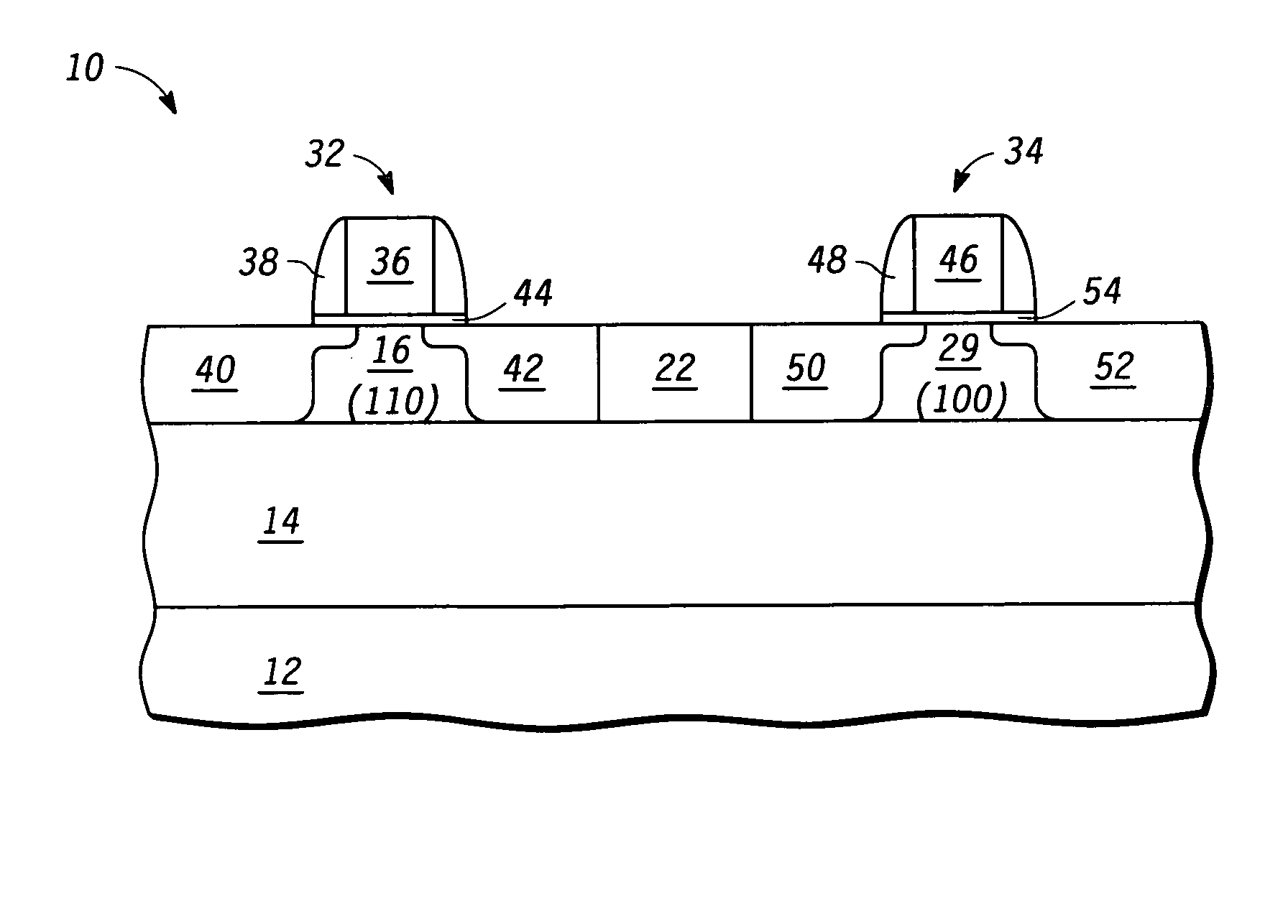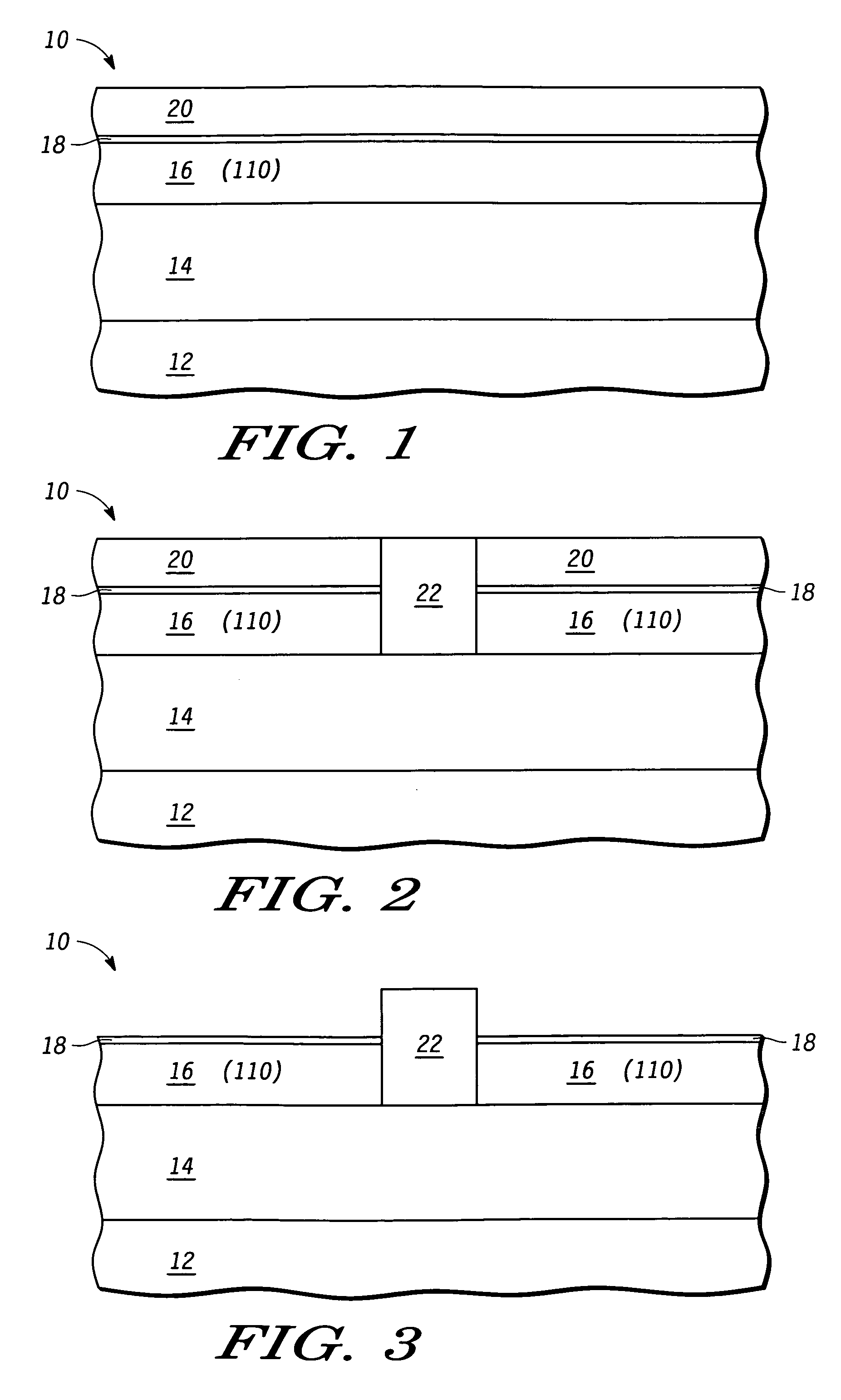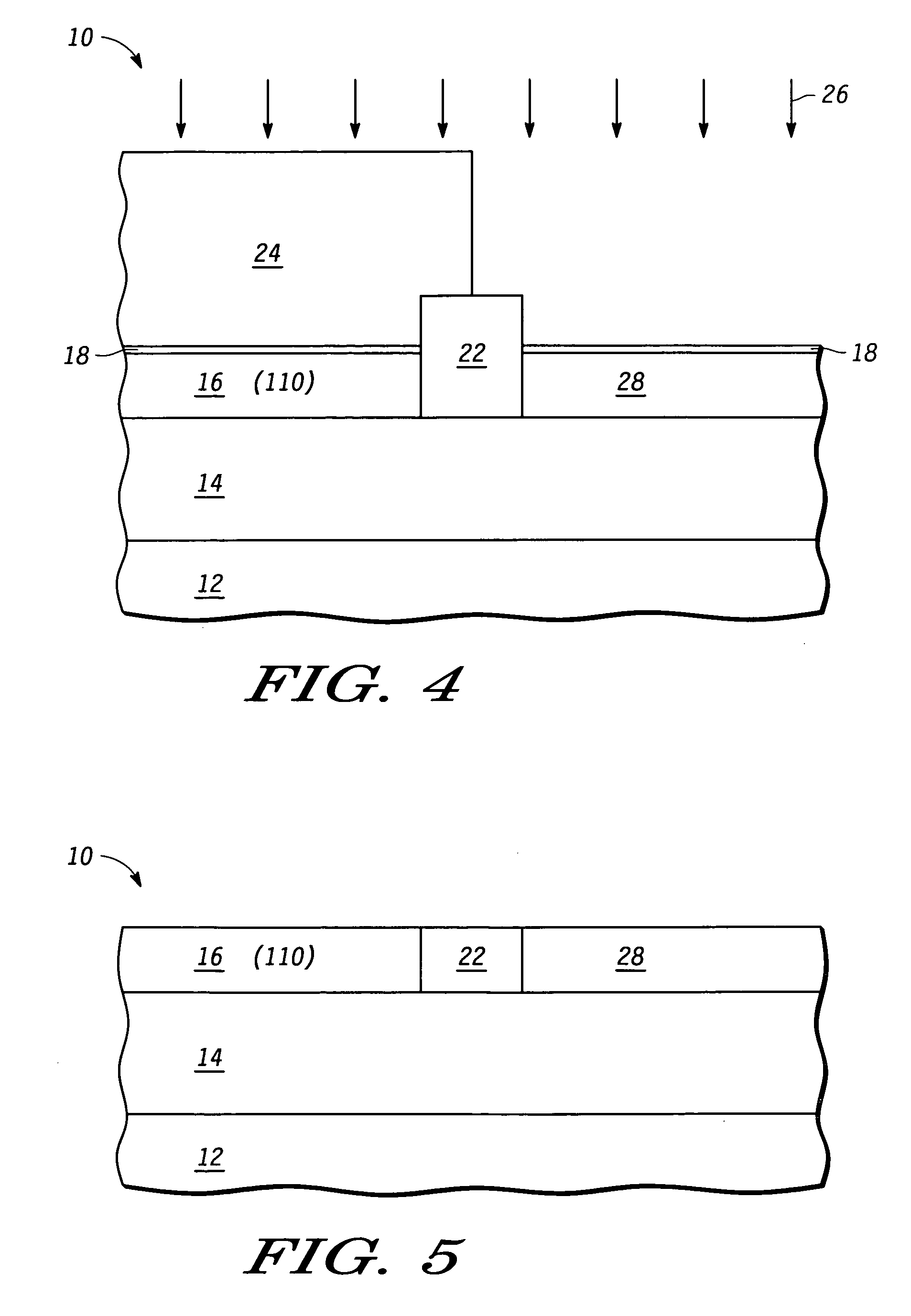Method to selectively form regions having differing properties and structure
a technology of region and structure, applied in the field of selectively forming regions, can solve the problem of further increasing complexity
- Summary
- Abstract
- Description
- Claims
- Application Information
AI Technical Summary
Benefits of technology
Problems solved by technology
Method used
Image
Examples
Embodiment Construction
[0015]In one aspect a semiconductor device has a first semiconductor region of a first property such as a (110) surface orientation and a second semiconductor region separated from the first region by isolation. The first property is chosen to enhance the operation of a first transistor type. The second region is converted to amorphous while leaving the first region with the first property. A semiconductor layer having a second property that enhances the operation of a second transistor type is then bonded to the semiconductor device. The second region is then converted to the second property based on being bonded to the semiconductor having the second property. The semiconductor layer is removed. A transistor of the first type is formed in the first region, and a transistor of the second type is formed in the second region. This is better understood by reference to the drawings and the following description.
[0016]Shown in FIG. 1 is a semiconductor device structure 10 comprising a s...
PUM
 Login to View More
Login to View More Abstract
Description
Claims
Application Information
 Login to View More
Login to View More - R&D
- Intellectual Property
- Life Sciences
- Materials
- Tech Scout
- Unparalleled Data Quality
- Higher Quality Content
- 60% Fewer Hallucinations
Browse by: Latest US Patents, China's latest patents, Technical Efficacy Thesaurus, Application Domain, Technology Topic, Popular Technical Reports.
© 2025 PatSnap. All rights reserved.Legal|Privacy policy|Modern Slavery Act Transparency Statement|Sitemap|About US| Contact US: help@patsnap.com



